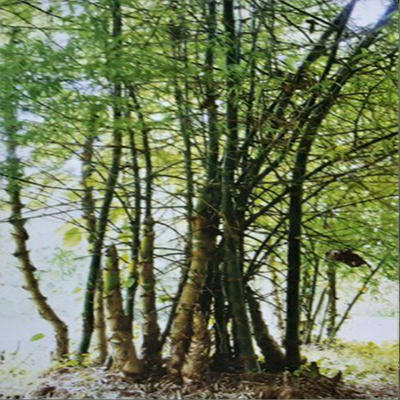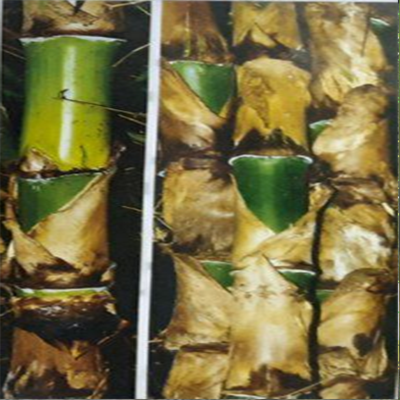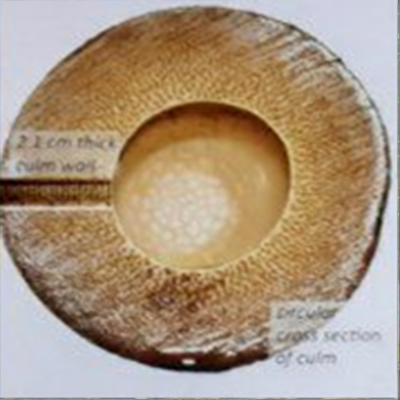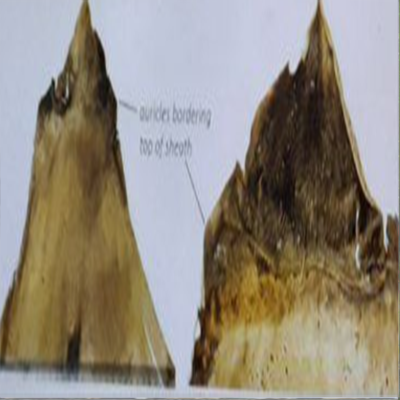18. Thyrsostachys siamensis Gamble
Local names
Monastery Bamboo,
Umbrella Bamboo,
Thai Bamboo.
General description
Monastery bamboo is a perennial, evergreen, clumping bamboo with short rhizomes. In seasonal climates the plant is deciduous in the dry season. The erect culms are 7 - 13 metres long; 20 - 60mm in diameter; with the thick-walled internodes 15 - 30cm long. The narrow lance-shaped leaves have a pale green color and are 7-15 cm long and 6-12 mm wide. Culm sheaths are persistent and 20-25 cm long by 10-20 cm wide near the base. The culm sheaths are pale green when young and turn pale brown with age. Young shoots have a pale to purplish-green color and a long sheath with brown hairy margin. Branches arise from the midculm nodes upwards and have one dominant (larger) primary branch, usually with one or two slightly smaller (“subdominant”) secondary branches and a few small branches along their length. It flowers gregariously with intervals of approximately 48 year cycles.
Habit and Habitat
Tree form. River valleys to hilly forested areas; at elevations from 500 - 1,000 metres in southern China. Dry or semi-evergreen forest on poor soils. Monastery Bamboo will grow on a wide range of soils, provided they are not waterlogged. This bamboo species tolerates temperatures up to –4°C.
Distribution
Southern China, Myanmar, Thailand.
Uses
Young shoots are edible. Cultivated to provide shelter from wind. Used for construction, making baskets and handicrafts.



